Will Pfeifer's Blog, page 20
June 13, 2015
A Tour Through the Art Gallery, Part 3: Jay Geldhof
Over the years, I've accumulated a few pieces of original comic book-related art. Nothing compared to the collections of some of my friends, admittedly, but there's some interesting stuff in there nonetheless. So, in my constant (and constantly failing) effort to keep this blog updated on a semi-regular basis, I thought I'd share some of them with you. Join me, won't you?
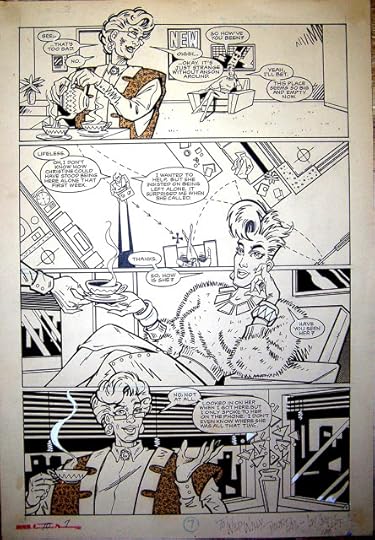
This one's not a con sketch. It's an actual page of original art that was printed in a comic book (GRENDEL #10, to be exact.) In fact, it's so old (cover date July 1987, which means this was drawn at least a few months earlier) that it still has actual lettering and screen tones as part of the art -- any sort of computer creation or composition still being years away. The pencils are by Jacob and Arnold Pander, but it's the inks we're focusing on here, because they're courtesy of my old friend Jay Geldhof. I first met Jay in the fall of 1986 during my sophomore year at Kent State, and he was knee deep in inking this Grendel arc during that time. He kindly gave me this page, a vintage slice of genuine '80s comic book art. It wouldn't be the last Grendel page he'd give me -- but more on that in the next installment.

This one's not a con sketch. It's an actual page of original art that was printed in a comic book (GRENDEL #10, to be exact.) In fact, it's so old (cover date July 1987, which means this was drawn at least a few months earlier) that it still has actual lettering and screen tones as part of the art -- any sort of computer creation or composition still being years away. The pencils are by Jacob and Arnold Pander, but it's the inks we're focusing on here, because they're courtesy of my old friend Jay Geldhof. I first met Jay in the fall of 1986 during my sophomore year at Kent State, and he was knee deep in inking this Grendel arc during that time. He kindly gave me this page, a vintage slice of genuine '80s comic book art. It wouldn't be the last Grendel page he'd give me -- but more on that in the next installment.
Published on June 13, 2015 17:54
June 12, 2015
A Tour Through the Art Gallery, Part 2: Pete Bagge
Over the years, I've accumulated a few pieces of original comic book-related art. Nothing compared to the collections of some of my friends, admittedly, but there's some interesting stuff in there nonetheless. So, in my constant (and constantly failing) effort to keep this blog updated on a semi-regular basis, I thought I'd share some of them with you. Join me, won't you?
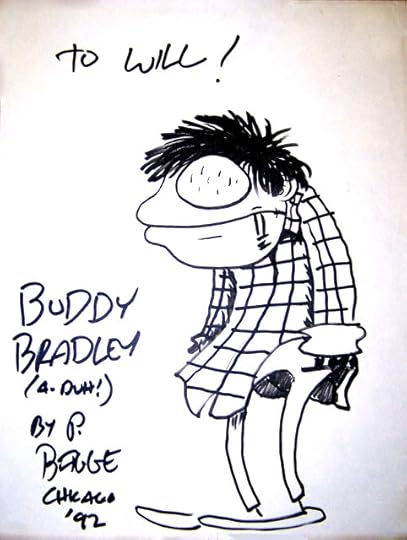
Picked up this swell sketch of Buddy Bradley (a-duh!) at the 1992 Chicago Con, which is the only show I think I've ever seen the esteemed Mr. Bagge at. I still think his HATE is the great unsung comic book of the 1990s and beyond, and one of the purely funniest things I've ever read. Back in college, even before HATE hit the stands in 1990, my college roommates and I loved the Buddy Bradley stories in Bagge's NEAT STUFF (especially "Hippy House," a book-length epic I still think ranks among the best single issues I've ever read.) I'm glad that, between biographies of Margaret Sanger and strips for Reason Magazine, Bagge still finds time to update us every so often on what's going on with Buddy and his brood. In their own way, those stories are just as meaningful and real as the stories of Maggie and Hopey that Bagge's fellow Fantagraphics creator Jaime Hernandez is telling in LOVE AND ROCKETS.
Side note: The most memorable thing about the 1992 convention was that this was the year Image Comics became popular on a terrifying level. I remember coming back from some Chicago bar with my pals Jay Geldhof and Jill Thompson (both of whom will show up in this blog series before long) at about 2 in the morning and seeing the giant tents set up outside the hotel where Todd McFarlane, Rob Liefeld and the other artists were signing comics. The lines were still hundreds deep, even at that late (early?) hour.

Picked up this swell sketch of Buddy Bradley (a-duh!) at the 1992 Chicago Con, which is the only show I think I've ever seen the esteemed Mr. Bagge at. I still think his HATE is the great unsung comic book of the 1990s and beyond, and one of the purely funniest things I've ever read. Back in college, even before HATE hit the stands in 1990, my college roommates and I loved the Buddy Bradley stories in Bagge's NEAT STUFF (especially "Hippy House," a book-length epic I still think ranks among the best single issues I've ever read.) I'm glad that, between biographies of Margaret Sanger and strips for Reason Magazine, Bagge still finds time to update us every so often on what's going on with Buddy and his brood. In their own way, those stories are just as meaningful and real as the stories of Maggie and Hopey that Bagge's fellow Fantagraphics creator Jaime Hernandez is telling in LOVE AND ROCKETS.
Side note: The most memorable thing about the 1992 convention was that this was the year Image Comics became popular on a terrifying level. I remember coming back from some Chicago bar with my pals Jay Geldhof and Jill Thompson (both of whom will show up in this blog series before long) at about 2 in the morning and seeing the giant tents set up outside the hotel where Todd McFarlane, Rob Liefeld and the other artists were signing comics. The lines were still hundreds deep, even at that late (early?) hour.
Published on June 12, 2015 17:35
June 10, 2015
A Tour Through the Art Gallery: Part 1
Over the years, I've accumulated a few pieces of original comic book-related art. Nothing compared to the collections of some of my friends, admittedly, but there's some interesting stuff in there nonetheless. So, in my constant (and constantly failing) effort to keep this blog updated on a semi-regular basis, I thought I'd share some of them with you. Join me, won't you?
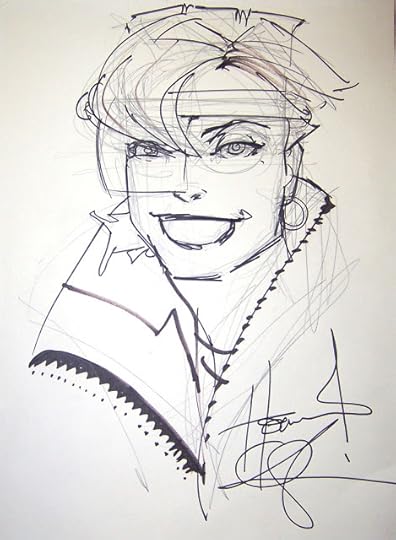
Mandy Krieger (from American Flagg) sketch by Howard Chakyin
This is the first piece of comic art I ever bought, from the first comic convention I ever attended. It was the 1986 Chicago Comicon, held way out in Rosemont at some hotel long before the days of Wizard World Cons or C2E2. I'm pretty sure Chaykin had moved on from drawing Flagg by this point, and was working on either The Shadow or Blackhawk, but he was more than happy to draw this great sketch of Mandy while singing "I Can't Get Started With You" (to prove he knew the words, which were changed by the editor in an issue of The Shadow) and, if memory serves, charged me a mere $15. The lesson is, if you're at a convention and Howard Chaykin is a guest, by all means hang out at his table as much as you can. He's one of the most entertaining creators I've ever met.

Mandy Krieger (from American Flagg) sketch by Howard Chakyin
This is the first piece of comic art I ever bought, from the first comic convention I ever attended. It was the 1986 Chicago Comicon, held way out in Rosemont at some hotel long before the days of Wizard World Cons or C2E2. I'm pretty sure Chaykin had moved on from drawing Flagg by this point, and was working on either The Shadow or Blackhawk, but he was more than happy to draw this great sketch of Mandy while singing "I Can't Get Started With You" (to prove he knew the words, which were changed by the editor in an issue of The Shadow) and, if memory serves, charged me a mere $15. The lesson is, if you're at a convention and Howard Chaykin is a guest, by all means hang out at his table as much as you can. He's one of the most entertaining creators I've ever met.
Published on June 10, 2015 17:08
June 2, 2015
Movies I Watched in May, Part 1
The second day of the month, and I've already got the first half of last month's movie recaps posted. What is this, Wackyland? Whatever it is, don't expect it in July -- but this is June, so let's get to it...
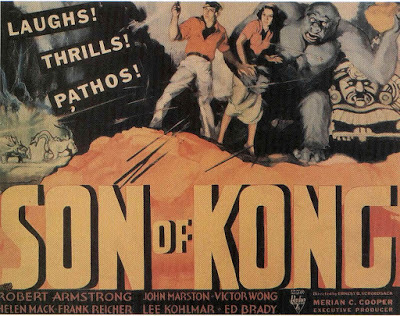
I don’t think I’ve seen this one since my first burst of monster movie love back in the 1970s. It paled next to its predecessor, “King Kong,” and wasn’t even a match for its spiritual sequel, 1949’s “Mighty Joe Young.” Even so, when it showed up on (where else?) TCM not long ago, I wanted to give it another look. It’s not much better than I remembered, with Son a weak substitute for Dad (and the poor guy dies in the end, along with every other beast on Skull Island), but the movie’s premise is pretty promising: After dragging Kong to New York and wrecking the city, Carl Denham (Robert Armstrong, still great) has to duck creditors and lawsuits until he can sneak out of the city. The most surprising thing about “Son of Kong”? It was released in 1933 – a mere eight months after its legendary father. Who says quick, cash-in sequels are a modern invention?
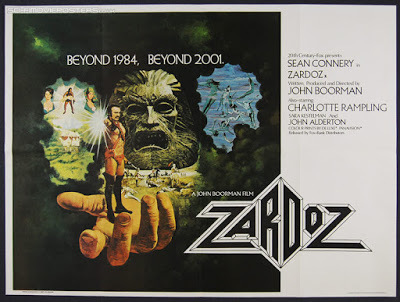
I’ve been hearing about this 1974 John Boorman oddity since Danny Peary covered it in “Cult Movies 2,” and before that, I probably caught a few glimpses of its distinctly seventies-style nudity late night on Cinemax. After hearing the hilarious “How Did This Get Made” podcast episode devoted to “Zardoz,” though, I couldn’t resist picking up the new Blu-ray. If you’re going to experience one of the damndest movies ever made, you might as well do it in hi-def, right? So how was it? Not good, exactly, but not bad either, and consistently fascinating. It’s one of those pre-“Star Wars” ‘70s sci-fi movies that’s really trying to say something, man, and give Boorman credit, he uses some big, bold visuals to get his message across (whatever that message is). Sean Connery’s red diaper/bandolero is the most memorable visual, unfortunately, but that giant stone head vomiting guns and ammunition all over the countryside is pretty amazing, too. I can’t recommend it to everyone, but if you’re the sort of person who likes this sort of movie, you’ll really like this movie – understand? By the way, I'll be talking about this one on the Plain Label Podcast soon -- stay tuned for more info.
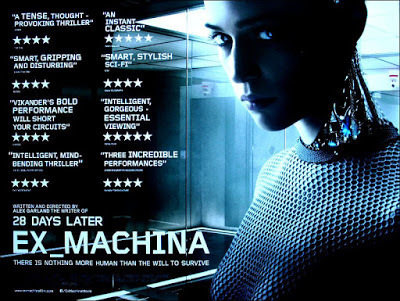
Here’s the opposite of “Zardoz,” a modern sci-fi film with a tiny cast, restrained tone and distinct lack of red diapers or vomiting stone heads. Caleb (Domhnall Gleason) “wins” a week-long stay at his mysterious boss’ even more mysterious home, and when he gets there, he learns he’s supposed to get to know his boss’ latest AI project and see if she can pass for human. (Mentally, that is – her exposed mechanics make it obvious that she’s been built in a lab.) Naturally, as the week goes on and the walls of that mysterious home start to close in, the relationships between Caleb, Ava (Alicia Vikander) and the increasingly creepy Nathan (Oscar Isaac) spin off in surprising directions. Essentially a four-person movie (Nathan also has a maid, Kyoko (Sonoya Mizuno) who speaks no English), it manages to be both smart and suspenseful while still managing to deliver enough lurid thrills to keep things interesting. The cast is excellent, and the setting, while beautiful, gets more and more threatening as the movie nears its ending. Credit writer/director Alex Garland (who also wrote “Dredd,” “Sunshine” and “28 Days Later”) for delivering one of the best movies of the year – and one with an ending that will leave you pondering its implications long after the credits roll.
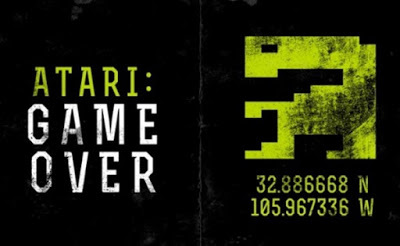
Short, slight (but amusing) little documentary about the urban legend that Atari buried thousands of unsold copies of its legendarily awful “E.T.” game under the sands of Alamogordo, New Mexico. Before getting to the excavation at the ending (which I won’t spoil here), director Zak Penn delivers a quick history of Atari, which frankly, is the most interesting thing in the movie. He touches base with plenty of game designers, who describe the anything-goes, pot-clouded atmosphere that fueled all that creativity until the bottom inevitably dropped out. Just seeing games like “Adventure” and “Pitfall” was a kick for this old 2600 owner (it’s still in the basement!), but the way the movie pitched Howard Scott Warshaw (who designed “E.T” and other, more successful games) as a martyr to history who will find redemption if they dig up a bunch of old cartridges was, well, more than a bit of a reach. For me, the big irony was seeing a cameo from George R.R. Martin, writer of “Game of Thrones.” That’s because there’s a great 2003 novel that no one’s read called “Lucky Wander Boy,” and one of the subplots involves those buried “E.T.” games. The writer behind it? D.B. Weiss, now one of the main minds guiding “Game of Thrones” on HBO. Hope he writes another book one of these days.

I don’t think I’ve seen this one since my first burst of monster movie love back in the 1970s. It paled next to its predecessor, “King Kong,” and wasn’t even a match for its spiritual sequel, 1949’s “Mighty Joe Young.” Even so, when it showed up on (where else?) TCM not long ago, I wanted to give it another look. It’s not much better than I remembered, with Son a weak substitute for Dad (and the poor guy dies in the end, along with every other beast on Skull Island), but the movie’s premise is pretty promising: After dragging Kong to New York and wrecking the city, Carl Denham (Robert Armstrong, still great) has to duck creditors and lawsuits until he can sneak out of the city. The most surprising thing about “Son of Kong”? It was released in 1933 – a mere eight months after its legendary father. Who says quick, cash-in sequels are a modern invention?

I’ve been hearing about this 1974 John Boorman oddity since Danny Peary covered it in “Cult Movies 2,” and before that, I probably caught a few glimpses of its distinctly seventies-style nudity late night on Cinemax. After hearing the hilarious “How Did This Get Made” podcast episode devoted to “Zardoz,” though, I couldn’t resist picking up the new Blu-ray. If you’re going to experience one of the damndest movies ever made, you might as well do it in hi-def, right? So how was it? Not good, exactly, but not bad either, and consistently fascinating. It’s one of those pre-“Star Wars” ‘70s sci-fi movies that’s really trying to say something, man, and give Boorman credit, he uses some big, bold visuals to get his message across (whatever that message is). Sean Connery’s red diaper/bandolero is the most memorable visual, unfortunately, but that giant stone head vomiting guns and ammunition all over the countryside is pretty amazing, too. I can’t recommend it to everyone, but if you’re the sort of person who likes this sort of movie, you’ll really like this movie – understand? By the way, I'll be talking about this one on the Plain Label Podcast soon -- stay tuned for more info.

Here’s the opposite of “Zardoz,” a modern sci-fi film with a tiny cast, restrained tone and distinct lack of red diapers or vomiting stone heads. Caleb (Domhnall Gleason) “wins” a week-long stay at his mysterious boss’ even more mysterious home, and when he gets there, he learns he’s supposed to get to know his boss’ latest AI project and see if she can pass for human. (Mentally, that is – her exposed mechanics make it obvious that she’s been built in a lab.) Naturally, as the week goes on and the walls of that mysterious home start to close in, the relationships between Caleb, Ava (Alicia Vikander) and the increasingly creepy Nathan (Oscar Isaac) spin off in surprising directions. Essentially a four-person movie (Nathan also has a maid, Kyoko (Sonoya Mizuno) who speaks no English), it manages to be both smart and suspenseful while still managing to deliver enough lurid thrills to keep things interesting. The cast is excellent, and the setting, while beautiful, gets more and more threatening as the movie nears its ending. Credit writer/director Alex Garland (who also wrote “Dredd,” “Sunshine” and “28 Days Later”) for delivering one of the best movies of the year – and one with an ending that will leave you pondering its implications long after the credits roll.

Short, slight (but amusing) little documentary about the urban legend that Atari buried thousands of unsold copies of its legendarily awful “E.T.” game under the sands of Alamogordo, New Mexico. Before getting to the excavation at the ending (which I won’t spoil here), director Zak Penn delivers a quick history of Atari, which frankly, is the most interesting thing in the movie. He touches base with plenty of game designers, who describe the anything-goes, pot-clouded atmosphere that fueled all that creativity until the bottom inevitably dropped out. Just seeing games like “Adventure” and “Pitfall” was a kick for this old 2600 owner (it’s still in the basement!), but the way the movie pitched Howard Scott Warshaw (who designed “E.T” and other, more successful games) as a martyr to history who will find redemption if they dig up a bunch of old cartridges was, well, more than a bit of a reach. For me, the big irony was seeing a cameo from George R.R. Martin, writer of “Game of Thrones.” That’s because there’s a great 2003 novel that no one’s read called “Lucky Wander Boy,” and one of the subplots involves those buried “E.T.” games. The writer behind it? D.B. Weiss, now one of the main minds guiding “Game of Thrones” on HBO. Hope he writes another book one of these days.
Published on June 02, 2015 16:09
May 24, 2015
Movies I Watched in April, Part 3: The Thrilling Conclusion
Seeing as how May is almost over, I figured I might as well finish the recap of movies I watched in April. So here you go, film fans...
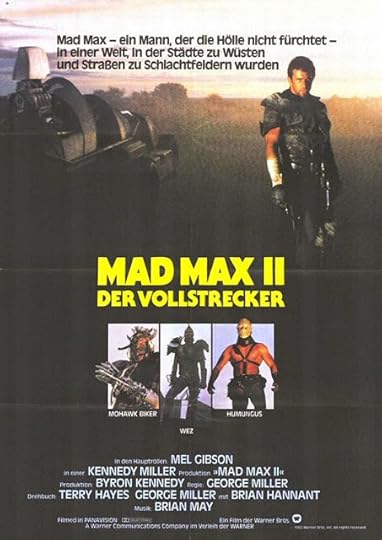
Watched this one for the first time in years (decades?) in preparation for our Out Of Theaters podcast episode devoted to those first two Mad Max films. (You can listen to that very ep by clicking here, incidentally.) I'm happy to report that it's still one of the best pure action films every made, avoiding the (possibly intentional?) slow midsection of its predecessor by keeping things speeding headlong from the very first frames. What's more, it's both beautifully filmed and endlessly imaginative, with director George Miller creating a fascinating, fully lived-in world from just a few scattered scraps of civilization and some admittedly out-there costumes. Back in the 1980s, I remember critics describing "The Road Warrior" as a comic book come to life (back before every other movie in theaters was a comic book come to life), and in the best possible way, that sums things up perfectly. It's a simple story, but not a dumb one, with colorful characters and some of the most balls-out action ever put on screen. I haven't seen "Fury Road" yet, but if it actually does top this one, that, my friends, is an impressive achievement indeed.
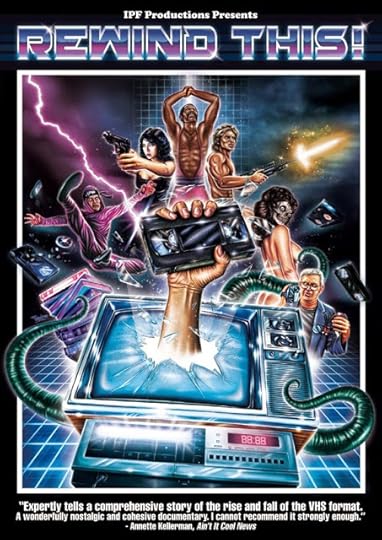
Watched this one again mostly for some background noise and enjoyed it quite a bit. It's a fun little doc about the rise and fall of videotapes, and for someone who grew up in (and loved) that era, it's more than a little bittersweet. I mean, Blu-rays are great and all, but there's nothing to compare with the illicit thrill of perusing the racks of (the long defunct) McKinley Heights Video of my misspent youth and finding a copy of something like, say, "Dr. Butcher, M.D." We live in a wonderful age of instant gratification and on-demand video, but like Woody Allen says in "Annie Hall" (which we'll discuss next month), "You have to make a little effort once in a while."
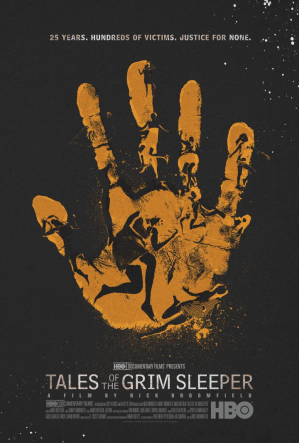
And we wind up the month of April with one of the most compelling, most unsettling documentaries I've seen in a long, long time. "Tales of the Grim Sleeper" examines a decades-long murder spree in South Central Los Angeles and questions why, when there was ample evidence, a bank of witness accounts and a horrifying trail of bodies, the LAPD did virtually nothing to investigate it -- let alone end it. The sad truth is that virtually all the victims were African American prostitutes and drug addicts, so the cops seemed perfectly content to let a murderer take them off the streets. What makes "Tales" so revelatory is that it's no simple whodunit. Instead, the movie begins with the accused killer being (finally) arrested, and director Nick Broomfield and his crew spend the majority of the film meeting the women who worked for years to get him arrested and other women who encountered him and were lucky enough to escape with their lives. One of those women, former addict and sex worker Pam Brooks, becomes the de facto star of the movie, guiding Broomfield through the dark alleys and back streets, revealing no small amount of courage and compassion as she tracks down women whose pictures were found in the killer's house and might be among his victims. More than anything "Tales of the Grim Sleeper" introduces you to people not otherwise seen on TV or in movies, from the killer's friends (who seem creepier with each interview) to Brooks herself to the parade of prostitutes grateful to be alive but shell-shocked by how they get by. As one says near the end of the film, "I never wanted my life to turn out like this." Highest possible recommendation.

Watched this one for the first time in years (decades?) in preparation for our Out Of Theaters podcast episode devoted to those first two Mad Max films. (You can listen to that very ep by clicking here, incidentally.) I'm happy to report that it's still one of the best pure action films every made, avoiding the (possibly intentional?) slow midsection of its predecessor by keeping things speeding headlong from the very first frames. What's more, it's both beautifully filmed and endlessly imaginative, with director George Miller creating a fascinating, fully lived-in world from just a few scattered scraps of civilization and some admittedly out-there costumes. Back in the 1980s, I remember critics describing "The Road Warrior" as a comic book come to life (back before every other movie in theaters was a comic book come to life), and in the best possible way, that sums things up perfectly. It's a simple story, but not a dumb one, with colorful characters and some of the most balls-out action ever put on screen. I haven't seen "Fury Road" yet, but if it actually does top this one, that, my friends, is an impressive achievement indeed.

Watched this one again mostly for some background noise and enjoyed it quite a bit. It's a fun little doc about the rise and fall of videotapes, and for someone who grew up in (and loved) that era, it's more than a little bittersweet. I mean, Blu-rays are great and all, but there's nothing to compare with the illicit thrill of perusing the racks of (the long defunct) McKinley Heights Video of my misspent youth and finding a copy of something like, say, "Dr. Butcher, M.D." We live in a wonderful age of instant gratification and on-demand video, but like Woody Allen says in "Annie Hall" (which we'll discuss next month), "You have to make a little effort once in a while."

And we wind up the month of April with one of the most compelling, most unsettling documentaries I've seen in a long, long time. "Tales of the Grim Sleeper" examines a decades-long murder spree in South Central Los Angeles and questions why, when there was ample evidence, a bank of witness accounts and a horrifying trail of bodies, the LAPD did virtually nothing to investigate it -- let alone end it. The sad truth is that virtually all the victims were African American prostitutes and drug addicts, so the cops seemed perfectly content to let a murderer take them off the streets. What makes "Tales" so revelatory is that it's no simple whodunit. Instead, the movie begins with the accused killer being (finally) arrested, and director Nick Broomfield and his crew spend the majority of the film meeting the women who worked for years to get him arrested and other women who encountered him and were lucky enough to escape with their lives. One of those women, former addict and sex worker Pam Brooks, becomes the de facto star of the movie, guiding Broomfield through the dark alleys and back streets, revealing no small amount of courage and compassion as she tracks down women whose pictures were found in the killer's house and might be among his victims. More than anything "Tales of the Grim Sleeper" introduces you to people not otherwise seen on TV or in movies, from the killer's friends (who seem creepier with each interview) to Brooks herself to the parade of prostitutes grateful to be alive but shell-shocked by how they get by. As one says near the end of the film, "I never wanted my life to turn out like this." Highest possible recommendation.
Published on May 24, 2015 15:56
May 19, 2015
Why David Letterman Matters
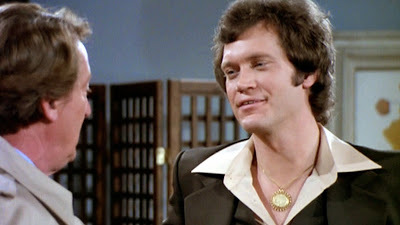
The first time I saw David Letterman was during a 1979 episode of “Mork and Mindy. Dave played the leader of an EST-like encounter group who bullied his followers while endlessly bragging about his money and fancy car. Naturally, the point of the episode was to see Mork’s innocent goodness defeat Dave's corrupt worldview, but Letterman – though not much of an actor, as I’m sure he’d admit – really delivered when it came to the smarminess of the role. Seventies hairdo, gold medallion and wide collar aside, I wanted to see more of this guy.
Thankfully, I didn’t have to wait long. Letterman’s ill-fated morning show aired during the summer and early fall of 1980, and I watched every episode I could. (School was out, and I had nothing better to do.) Credit my mom for seeing it one day and encouraging me to tune in, figuring a weirdo like me would like a weirdo like Dave. It wasn’t quite like the late night shows he became famous for, more a satire of a talk show than even the loose interpretation he would eventually do. But it was funny as hell, consistently surprising and like nothing I’d ever seen before. I was sad (if not surprised) to see it cancelled, figuring I'd never see anything quite like it again. (I had such fond memories of Dave's morning show that, in the pre-Internet 1990s, my friend Neal (a fellow Letterman fan) and I spent hours during a trip to Manhattan huddled in front of a video screen at the Museum of TV and Radio, watching a videotape of the morning show’s final episode. It was worth it just to see the resumes of the soon-to-be-unemployed crew used as bumpers for the commercials.)
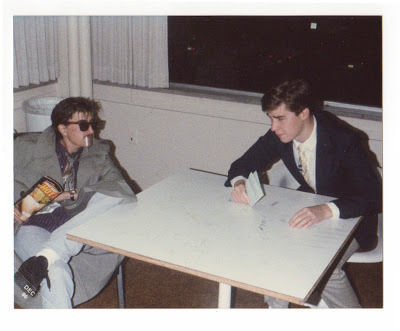
Thankfully, Dave returned to the airwaves in early 1982 with “Late Night with David Letterman,” the show that made him famous – and the one, if we’re being honest, he’s still revered for, at least by people my age. I was in high school then, which means I was able to catch “Late Night” every now and then (in Ohio it started at 12:30 a.m. and ended an hour later, which means my ass would be dragging at school if I stayed up to watch). But once I got to college in 1985 later, all bets were off (no early morning classes) and I virtually never missed a show during my freshman and sophomore years. I actually dressed up as Dave for Halloween my sophomore year (easy costume – tan khakis, a blue sportcoat and tennis shoes) and when I first visited Manhattan a year or so later, I made sure to visit 30 Rock, even though I didn’t have tickets to “Late Night.” Just being outside the building where it took place had meant a lot to me. (My wife did attend a taping of Dave's CBS show years later, and for that I remain eternally jealous.)
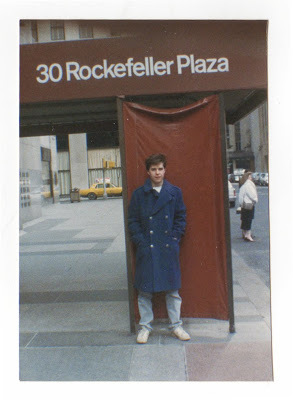
Those were the golden years, when surreal running gags like The Monkey Cam and The Dancing Waters made every episode a must-see. I’d always thought Letterman (and, by extension, his writers), crafted hilarious jokes, but it was during this era that his outlook – comedic and otherwise – began to shape my outlook. It was sarcastic, sure, and goofy, but it was more than that. Dave seemed alternately bemused, annoyed and amazed that he was on TV, and he behaved like no other talk show host. People remember the pre-planned comedy bits, like the suit of Velcro, tossing things off a five-story tower or Stupid Pet Tricks, but what I really loved about “Late Night” was the stuff between all that, the banter with Paul, the endless goofy looks Dave would shoot the camera and the strange things he would say just because they seemed funny to him. People criticize Dave (especially these days) for not caring about the audience and just trying to amuse himself, but I’d take a thousand hours of that sort of thing over whatever Jimmy Fallon, James Corden and the rest of what passes for late night is doing. Cher famously called Dave “an asshole” on her first “Late Night” appearance, but he was only an asshole compared to other hosts who sucked up to every celebrity that sat down next to them. Dave was, more than anything, just being honest. If he was fascinated by a champion grocery bagger, you saw it. And if he was annoyed by Madonna’s never ending attempt to be “shocking,” you saw that, too.
And speaking of Cher, one of the most memorable musical performances in talk show history came when she and Sonny reunited on Dave’s show to sing “I’ve Got You, Babe.” One of the best things about Dave’s shows is that, when they did get serious or emotional, it was the real deal. Sometimes that meant he was cranky or obviously bored. But at other times, it was gold – comedy and otherwise.Dave never acted like he was above the whole celebrity machine, even when he obviously wasn’t thrilled to be helping someone promote their latest project. Instead, he felt outside that machine, next to it or slightly behind it, making fun of it, looking at it from an angle where, all of a sudden, it didn’t look that impressive. Some people, both in the audience and on the show, thought Dave’s attitude was refreshing and returned to “Late Night” as often as possible. Others thought he was, in Cher’s words, “an asshole,” and visited Johnny instead. Or Jay. Or Arsenio. Or any of the dozens of hosts who’ve come and gone since Dave first took up residence at 30 Rock (or, after he made the switch to CBS, at the Ed Sullivan Theater.)

I’ll admit, I rarely watch Dave these days, besides tuning in for the annual Christmas show, with Jay Thomas tossing the football and telling his Lone Ranger story and Darlene Love belting out “Christmas (Baby Please Come Home).” (And, by the way, how wonderful is it that Dave devoted a good chunk of his holiday show every year to comedy and music from two old friends?) I’ve only been watching “The Late Show” lately to see the final days of a true TV icon. It’s telling that someone like Norm MacDonald, one of the funniest guys on the planet and, sometimes, one of the darkest comedians around, actually broke down when he was doing his final “Late Show” set last week, actually telling Dave “I love you” – and meaning it. It’s more than the fact that Norm got his start with an appearance on Dave’s show or that he remembers the first joke he ever heard Letterman deliver, way back in his own standup days. It’s that Norm knows – and I know – that after Dave leaves the airwaves Wednesday, there’s not anyone who can fill that spot. Stephen Colbert is great, and a smart, original comic mind in his own right, but Dave made the world possible for guys like Colbert … and Jon Stewart and Conan and Craig Ferguson and Jon Oliver and The Onion and "The Simpsons" and "Funny Or Die" and every other force for comedy, well-known or obscure, that mattered in the last 30 years.
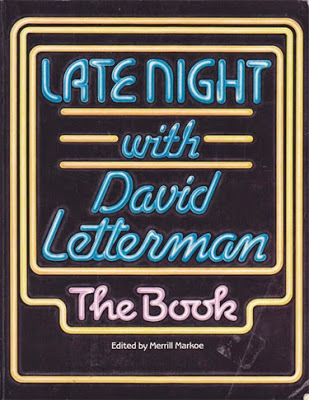
There are a million things I'll remember about Letterman, most of them admittedly from the "Late Night" era and most of them admittedly goofy: The Thrill Cam, the Monkey Cam and the ill-fated Tiger Cam. The time he replaced the pencils and the breaking glass sound effect with steel pencils and actual glass. The time he was looking for a sound to replace that breaking glass effect and somehow got a voice saying "Hey, brother man, what it is, what it is." "Late Night With David Letterman: The Book," which was so shoddily produced that Dave advised prospective buyers to ask the bookstore "where they keep the cheap, crappy looking books." Larry "Bud" Melman welcoming arrivals at the Port Authority. Just Bulbs. Just Shades. Vince McMahon (yes, that Vince McMahon) welcoming the arrival of the "Late Night Baby." Paul's annual rendition of Cher's rendition of "O Holy Night." Chris Elliot as The Guy Under the Seats. Director Hal "Gurtner" Gurnee. Dave asking "how about something from Greek mythology" before throwing fluorescent bulbs off a five-story tower. Dave interrupting a prime time "Today" broadcast with a megaphone and really, really pissing off Bryant Gumbel.

But more than anything, I'll remember Dave himself. Like him or not, and many did not, you never got the feeling that he was faking it for the camera. Back in college, when I was first getting obsessive over "Late Night," I read an article about the show that described Dave as being not exactly the nicest guy in the world off-camera. This was surprising and, I'll admit, a little upsetting, but over the years I've come to appreciate the fact that he hasn't had his rough edges rubbed off by showbiz. For that reason, the moments when he actually got serious and sincere -- after the attacks of Sept. 11, when he returned from heart surgery and when he discussed his extramarital affairs -- actually meant something. Most talk show hosts are so desperate to connect with their audience that their hearts rarely leave their sleeves, and they're always eager to show how very much they care. Dave only acted like that when he really did care, and that's why those moments stand out. (This, I'll admit, is why it annoys me when Dave pals around with Oprah, the undisputed queen of fake, needy sincerity.)
So consider this long, rambling post a very sincere "thank you" to a man who will never read it. Since I was a teenager, my sense of humor and general outlook on life has been inspired by what I saw on "Late Night." I learned to be skeptical and sarcastic, of course, but it was more than that. It was a way of viewing the world from just a bit to the side of the main action, realizing that, for the most part, it was a lot sillier and less worthy of admiration than everyone assumed. But I also learned while life could be painful and boring and unfair, it could also be pretty damned funny if you looked hard enough for the joke. And, every so often, the small, forgotten, goofy things were more than funny -- they were evidence that, believe it or not, life wasn't so painful, boring or unfair after all.
Thanks, Dave. For everything.
Published on May 19, 2015 18:11
May 17, 2015
My favorite piece of David Letterman's writing
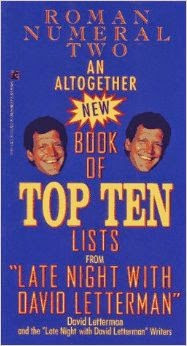
With the impending departure of David Letterman from the nation's airwaves, I thought I'd post this bit of Letterman prose, which was the "Foreward" for "An Altogether New Book of Top Ten Lists," which arrived in bookstores in 1991. Ninety-nine percent of the book is made up of lists that aired on Letterman's show (his NBC show, of course) and the remaining one percent is composed of an introduction by then head writer Steve O'Donnell and photos in the center that have something unexplained to do with a man named "Clifford T. Bell."
And, of course, this bit from Dave himself, one of the best sustained pieces of low-key insanity I've ever read. Dave's been pretty cagey about what he plans to do after Wednesday's final show airs, but I'd like to see him do more of this, even if it's almost 25 years old. Clearly, he's got a knack for it.FOREWARDYou’ll get a kick out of this. The other night, after dinner, I’m watching television, trying to relax at the end of a long, hard day. They’re showing this program starring that very popular blond actress who plays a curvaceous college co-ed with a great deal of sex appeal who lives with six football players, all of whom have a romantic interesting in her. The only reason the landlord lets these guys live there is because he believes they are actually mental patients — you know, insane — and she is their nurse or something. But of course, it’s all just pretend so they can stay there for really cheap rent. It’s all very comical. Anyway, I’m enjoying this program and all of a sudden my wife, Linda, says, “You pay more attention to that television actress than you do to me.” Well now, frankly, this is old news. And that’s exactly what I tell Linda. I say, “Linda, it’s old news.” And then I add the scorcher. I say, “You know, Linda, we’ve been to the moon.” Because by now, this is also old news. Well, then Linda’s mother starts in on me. Please don’t get me wrong. I love the old gal. But frankly, if, God forbid, she died tomorrow, St. Peter would really have had his hands full with the yak, yak, yak! So anyway, she says, “I didn’t raise my daughter just so you could make smart remarks about her.” And without thinking, I shoot back, “Well, I didn’t buy that couch so an overweight relative could flatten the cushions out of shape by sitting on it all day.” Well, I think you get the picture of how things are going at my house.
So anyway, Tuesday, I gotta fly to Detroit. Now God bless the airlines, they do a marvelous job but come on, why are they always late? The last time I flew we were supposed to take off at 4:10 p.m. Now at 4:30 we still had not left the gate. I said to the stewardess, “Honey, what’s the deal.” She shoots back kind of smart-alecky, “The pilot is waiting for some violent thunderstorm activity to clear the area.” Violent thunderstorms? I say to myself, “ She’s a regular Willard Scott.” So what can you do? Life is crazy and if I life to be 100, I’ll never figure it out. Like those wackos in Washington. Or should I say, our distinguished Congress. I tell people, “You want to see a comedy show, put some cameras in Congress. Then you’ll see some comedy.” And now I see where these geniuses voted themselves a raise. Hey, didn’t they just get a raise? But I’ll tell you one thing in all seriousness. If that Berlin Wall hadn’t come down, there could’ve been real trouble. So I think President Bush did a marvelous job on that one.
Let me just say one thing about Madonna and all her Truth or Dare stuff. Truth or Dare? The truth is, who cares? Have you seen this? Now they have these Madonna Wannabess. That’s great! Just what we need!
I have the worst luck. The other day my wife and I are in the market and I pick out a can of soup. Just my luck, it’s the only can of soup in the whole place that doesn’t have a price on it. So what happens? The checkout kid gets on the P.A. and says “Price check on a can of soup.” Great! Now the whole market knows I’m buying soup. Just what I need. Well, like I said, that’s the kind of luck I have. I don’t think the kid meant any harm or anything. I don’t think he even knew what he was doing really. When we got home, Linda and I had a pretty good laugh about it, but at the time, I’ll be honest with you. I was steamed.
Do you have any stories like this? If you do, we’d love to read them. And, if we print one of your stories we’ll send you fifty dollars. That’s right, fifty dollars. Well, good luck and get going.
David Letterman
Published on May 17, 2015 13:56
May 14, 2015
Movies I Watched in April, Special Edition: 'Paul Blart: Mall Cop 2'
Here it is, the review you've been waiting for...
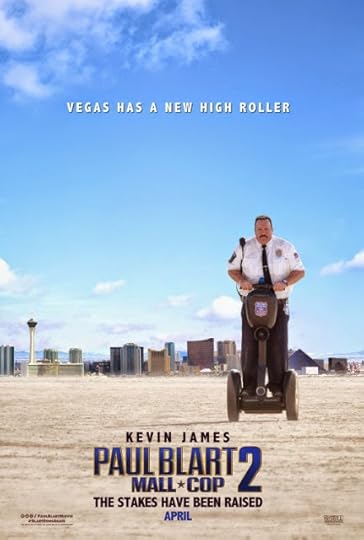
I have a confession to make. I watched the original “Paul Blart, Mall Cop” (well, most of it, anyway) and didn’t think it was terrible. By that I mean, yes, it was terrible on most levels, and as a movie it was yet another in a never-ending series of crimes against cinema, but the premise itself (bumbling mall cop meets “Die Hard”) isn’t the worst thing I’ve heard, and I’ve always had a certain fondness for Kevin James. So when the commercials for the sequel started running during lowest-common-denominator TV shows, I figured I’d see if my nine-year-old daughter wanted to go. At best, it would get us out of the house and deliver a few laughs. At worst, I’ve have something to write about on this blog.
Well, here I am, writing about it on this blog.
“Paul Blart: Mall Cop 2” is terrible, and it manages to be terrible in entirely new ways (besides the ways in which the old one is terrible.) For one thing, right off the bat it presses the reset button, eliminating Paul’s wife (immediate divorce) and mother (deadly car accident) in ways that are supposed to be funny, I guess, but instead just give the whole movie a queasy feeling. What’s worse, they establish Blart as even more of a sad sack than he was in the first film, endlessly pleading for the audience to love him despite the fact – and this is the movie’s real problem – that he’s completely unlovable. Hateable, even. As Nathan Rabin wrote in his review overat the Dissolve, in this movie, Blart acts like a big shot to compensate for his many, many shortcomings, “which makes him both a loser and a bit of a jerk – a winning combination for any screen hero.” My only disagreement with Rabin’s review is his use of “a bit of” – Blart’s a jerk through and through, annoying everyone onscreen and in the audience in misguided attempts at humor. I like Kevin James because he’s a likeable screen presence – but not here. Not by a long shot.
The rest of “Blart 2” is the typical lazy mix of clumsy sight gags, “heartwarming” character moments and over-the-top product placement. (The entire film is one long ad for Steve Wynn’s Vegas resort, including a terrifying cameo from the mummy-like Wynn himself at the end.) It’s just what you expect from a movie like “Paul Blart: Mall Cop 2,” but it would be nice if someone – anyone – had tried to make this a little better.
I will, however, give credit to the single scene that did make me laugh. At one point, for reasons no one can explain, Blart finds himself battling with some sort of exotic bird. It’s the same sloppy slapstick as the rest of the movie, but the entire scene is accompanied by a piano player who never says a word and only reacts with a plastered on smile as he keeps playing and playing as Blart takes hit after hit. I wish I could find that guy’s name in the credits, because he was funny.
Maybe they should make the next movie about him. Or, better yet, not make a next movie.

I have a confession to make. I watched the original “Paul Blart, Mall Cop” (well, most of it, anyway) and didn’t think it was terrible. By that I mean, yes, it was terrible on most levels, and as a movie it was yet another in a never-ending series of crimes against cinema, but the premise itself (bumbling mall cop meets “Die Hard”) isn’t the worst thing I’ve heard, and I’ve always had a certain fondness for Kevin James. So when the commercials for the sequel started running during lowest-common-denominator TV shows, I figured I’d see if my nine-year-old daughter wanted to go. At best, it would get us out of the house and deliver a few laughs. At worst, I’ve have something to write about on this blog.
Well, here I am, writing about it on this blog.
“Paul Blart: Mall Cop 2” is terrible, and it manages to be terrible in entirely new ways (besides the ways in which the old one is terrible.) For one thing, right off the bat it presses the reset button, eliminating Paul’s wife (immediate divorce) and mother (deadly car accident) in ways that are supposed to be funny, I guess, but instead just give the whole movie a queasy feeling. What’s worse, they establish Blart as even more of a sad sack than he was in the first film, endlessly pleading for the audience to love him despite the fact – and this is the movie’s real problem – that he’s completely unlovable. Hateable, even. As Nathan Rabin wrote in his review overat the Dissolve, in this movie, Blart acts like a big shot to compensate for his many, many shortcomings, “which makes him both a loser and a bit of a jerk – a winning combination for any screen hero.” My only disagreement with Rabin’s review is his use of “a bit of” – Blart’s a jerk through and through, annoying everyone onscreen and in the audience in misguided attempts at humor. I like Kevin James because he’s a likeable screen presence – but not here. Not by a long shot.
The rest of “Blart 2” is the typical lazy mix of clumsy sight gags, “heartwarming” character moments and over-the-top product placement. (The entire film is one long ad for Steve Wynn’s Vegas resort, including a terrifying cameo from the mummy-like Wynn himself at the end.) It’s just what you expect from a movie like “Paul Blart: Mall Cop 2,” but it would be nice if someone – anyone – had tried to make this a little better.
I will, however, give credit to the single scene that did make me laugh. At one point, for reasons no one can explain, Blart finds himself battling with some sort of exotic bird. It’s the same sloppy slapstick as the rest of the movie, but the entire scene is accompanied by a piano player who never says a word and only reacts with a plastered on smile as he keeps playing and playing as Blart takes hit after hit. I wish I could find that guy’s name in the credits, because he was funny.
Maybe they should make the next movie about him. Or, better yet, not make a next movie.
Published on May 14, 2015 16:41
May 8, 2015
Movies I Watched in April, Part 1
Once again, here's my reliably late recap of last month's movie watching:
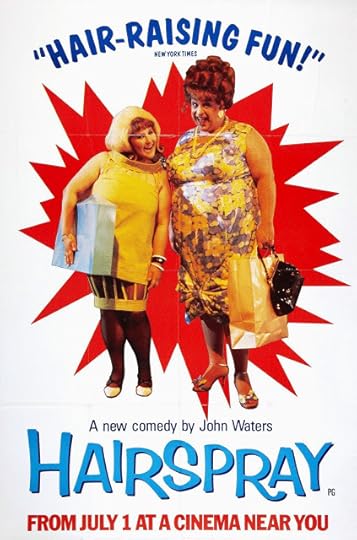
Back in my freshman year of college, when I stumbled, slack-jawed and shell-shocked out of a showing of "Pink Flamingos," I couldn't imagine showing a John Waters movie to a child, let alone my child. (Who, admittedly, I also couldn't imagine way back then.) Cut to last month, when I watched 1987's "Hairspray" with not only my nine-year-old daughter, but with my wife and mom as well. Of course, this period comedy about TV dance shows and Baltimore integration doesn't include Divine eating a fresh dog turd, as does "Pink Flamingos," but it does have a nice dose of edgy humor and, best of all, it does include Divine in all his cross-dressing glory (plus a small male-clothed bit as the racist owner of the TV station.) What's most shocking, though, is how warmhearted the whole thing is, with likable characters and an incredible vintage soundtrack, plus a cast that includes Ricki Lake, Debbie Harry, Sonny Bono, Jerry Stiller and Waters himself in a cameo role. It's the rare John Waters movie that's -- dare I say it -- fun for the whole family.
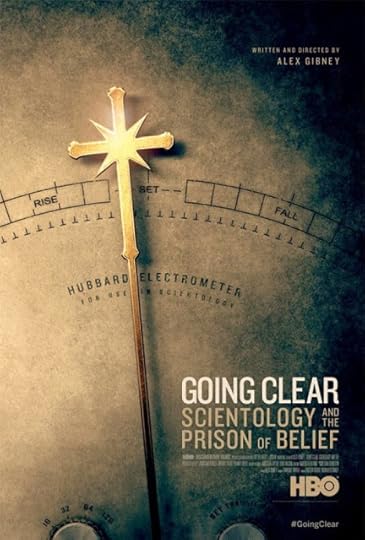
I read Lawrence Wright’s book of the same name a year ago, so many of the jaw-dropping revelations about Scientology (and trust me, they are indeed jaw-dropping) didn’t surprise me, but Alex Gibney’s notorious doc gains considerable power from the fact that you actually see these people tell their own stories and, even better, you get to watch genuine Scientology promotional videos that, though designed to put the church in the best possible light, are instead horrifying, hilarious glimpses into one very strange organization. As a documentary, it’s fascinating but exhausting, throwing so much information at the viewer it simple wears you down after a while. But as a study of human nature gone horribly, terribly wrong, it’s a must-see. Hell, the footage of L. Ron Hubbard’s birthday party (years after his death) is worth the price of admission alone. Not however, the best HBO documentary I saw in April. Turn in for the next installment to see what that was.
And now we enter the prestigious Oscar section of the recap, wherein I watch movies I should, by all accounts, have watched before the Academy Awards were, well, awarded. But those “Kojak” DVDs and “Naked and Afraid” reruns weren't going to watch themselves, so I’m only now getting around to these prestigious bits of Oscar bait. Sue me.
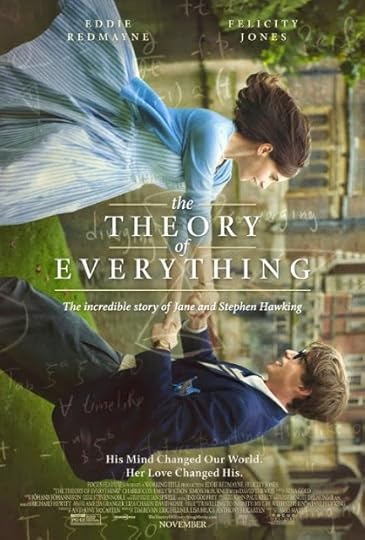
“The Theory of Everything” was a solid heartwarming biopic, just the sort of thing you expect to arrive in theaters in late December or early January. Though its lead actors, Eddie Redmayne and Felicity Jones, are excellent as Stephen and Jane Hawking (especially Redmayne), the whole movie had sort of a by-the-numbers feel, with the great-man-succeeds-thanks-to-loving-woman template pushed down so hard it sanded all the rough edges right off the movie. (Enough strained metaphors in that last sentence for you?) Still, I appreciated how director James March (who also directed one of my favorite documentaries of the last several years, “Man on Wire”) managed to give "Theory" a sort of trippy feel that helped convey both Hawking’s mind-bending ideas and the surreal transformation of his body. Good movie? Sure. Great movie? Well…
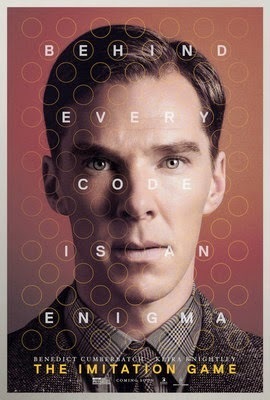
And, despite being about a completely different (though equally real-life) person, “The Imitation Game” somehow felt cut from the same cloth. Benedict Cumberbatch, who’s no stranger to playing socially awkward braniacs, is naturally top notch as ace codebreaker Alan Turing, and he’s surrounded by a strong cast, but like “The Theory of Everything,” it all feels like something we’ve seen before. (And I’m not talking about “Enigma,” which is a fictionalized version of the same story.) You’ve got the team coming together, the supervisor who doesn’t trust them, the last minute stroke of genius and the flashbacks to the hero’s past that somehow explain everything. And as for the subplot about Turing’s homosexuality? It’s there, but somehow, it’s included in yet another storyline (three alternating time periods is a bit too much for a movie like this) that never quite connects with the others. Not exactly bad, but not exactly good, either. And, according to DVD Savant Glenn Erickson’s excellent review, it plays pretty fast and loose with the historical record.
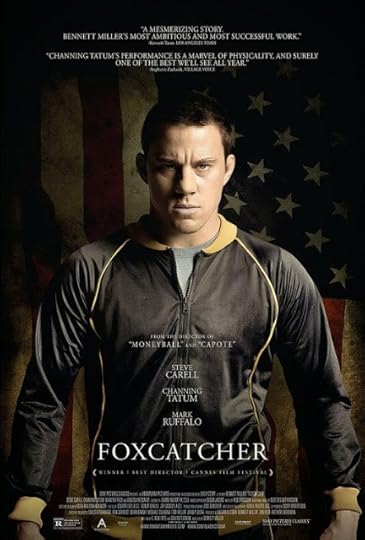
Now, this, this is the best Oscar-oriented movie I saw last month, despite the fact that it wasn’t nominated for a Best Picture award. (Actors Steve Carell, Mark Ruffalo, director Bennett Miller and the screenwriters were, though). Unlike “The Imitation Game” and “The Theory of Everything,” “Foxcatcher” is a tense, unnerving and, best of all, strange little movie that enters a creepy place and stays there for the durationn. Carell plays rich weirdo John du Pont, who is determined to finance (and inspire) a team of wrestlers who can bring home an Olympic gold medal. He recruits Mark Schultz (Channing Tatum) as a top prospect, then brings in his brother David (Ruffalo), a move that also unearths decades of sibling rivalry and unresolved conflicts between the two. It’s an intense drama, gaining power from its refusal to leave a confined space (even the competition scenes feel claustrophobic) and instead forces us to get closer and closer to its troubled characters. And, as good as Carell and Ruffalo are – and they’re very, very good – Channing Tatum is the MVP here, using his body to convey a character with troubled that go deep, deep down.
Coming up next: BLAAAAAAAART!

Back in my freshman year of college, when I stumbled, slack-jawed and shell-shocked out of a showing of "Pink Flamingos," I couldn't imagine showing a John Waters movie to a child, let alone my child. (Who, admittedly, I also couldn't imagine way back then.) Cut to last month, when I watched 1987's "Hairspray" with not only my nine-year-old daughter, but with my wife and mom as well. Of course, this period comedy about TV dance shows and Baltimore integration doesn't include Divine eating a fresh dog turd, as does "Pink Flamingos," but it does have a nice dose of edgy humor and, best of all, it does include Divine in all his cross-dressing glory (plus a small male-clothed bit as the racist owner of the TV station.) What's most shocking, though, is how warmhearted the whole thing is, with likable characters and an incredible vintage soundtrack, plus a cast that includes Ricki Lake, Debbie Harry, Sonny Bono, Jerry Stiller and Waters himself in a cameo role. It's the rare John Waters movie that's -- dare I say it -- fun for the whole family.

I read Lawrence Wright’s book of the same name a year ago, so many of the jaw-dropping revelations about Scientology (and trust me, they are indeed jaw-dropping) didn’t surprise me, but Alex Gibney’s notorious doc gains considerable power from the fact that you actually see these people tell their own stories and, even better, you get to watch genuine Scientology promotional videos that, though designed to put the church in the best possible light, are instead horrifying, hilarious glimpses into one very strange organization. As a documentary, it’s fascinating but exhausting, throwing so much information at the viewer it simple wears you down after a while. But as a study of human nature gone horribly, terribly wrong, it’s a must-see. Hell, the footage of L. Ron Hubbard’s birthday party (years after his death) is worth the price of admission alone. Not however, the best HBO documentary I saw in April. Turn in for the next installment to see what that was.
And now we enter the prestigious Oscar section of the recap, wherein I watch movies I should, by all accounts, have watched before the Academy Awards were, well, awarded. But those “Kojak” DVDs and “Naked and Afraid” reruns weren't going to watch themselves, so I’m only now getting around to these prestigious bits of Oscar bait. Sue me.

“The Theory of Everything” was a solid heartwarming biopic, just the sort of thing you expect to arrive in theaters in late December or early January. Though its lead actors, Eddie Redmayne and Felicity Jones, are excellent as Stephen and Jane Hawking (especially Redmayne), the whole movie had sort of a by-the-numbers feel, with the great-man-succeeds-thanks-to-loving-woman template pushed down so hard it sanded all the rough edges right off the movie. (Enough strained metaphors in that last sentence for you?) Still, I appreciated how director James March (who also directed one of my favorite documentaries of the last several years, “Man on Wire”) managed to give "Theory" a sort of trippy feel that helped convey both Hawking’s mind-bending ideas and the surreal transformation of his body. Good movie? Sure. Great movie? Well…

And, despite being about a completely different (though equally real-life) person, “The Imitation Game” somehow felt cut from the same cloth. Benedict Cumberbatch, who’s no stranger to playing socially awkward braniacs, is naturally top notch as ace codebreaker Alan Turing, and he’s surrounded by a strong cast, but like “The Theory of Everything,” it all feels like something we’ve seen before. (And I’m not talking about “Enigma,” which is a fictionalized version of the same story.) You’ve got the team coming together, the supervisor who doesn’t trust them, the last minute stroke of genius and the flashbacks to the hero’s past that somehow explain everything. And as for the subplot about Turing’s homosexuality? It’s there, but somehow, it’s included in yet another storyline (three alternating time periods is a bit too much for a movie like this) that never quite connects with the others. Not exactly bad, but not exactly good, either. And, according to DVD Savant Glenn Erickson’s excellent review, it plays pretty fast and loose with the historical record.

Now, this, this is the best Oscar-oriented movie I saw last month, despite the fact that it wasn’t nominated for a Best Picture award. (Actors Steve Carell, Mark Ruffalo, director Bennett Miller and the screenwriters were, though). Unlike “The Imitation Game” and “The Theory of Everything,” “Foxcatcher” is a tense, unnerving and, best of all, strange little movie that enters a creepy place and stays there for the durationn. Carell plays rich weirdo John du Pont, who is determined to finance (and inspire) a team of wrestlers who can bring home an Olympic gold medal. He recruits Mark Schultz (Channing Tatum) as a top prospect, then brings in his brother David (Ruffalo), a move that also unearths decades of sibling rivalry and unresolved conflicts between the two. It’s an intense drama, gaining power from its refusal to leave a confined space (even the competition scenes feel claustrophobic) and instead forces us to get closer and closer to its troubled characters. And, as good as Carell and Ruffalo are – and they’re very, very good – Channing Tatum is the MVP here, using his body to convey a character with troubled that go deep, deep down.
Coming up next: BLAAAAAAAART!
Published on May 08, 2015 08:31
April 26, 2015
Out of Theaters will be In Your Earbuds!

For the last couple of months or so, my two buddies and I have been working on a brand-new project, one that combines my obsessive love for old movies with my obsessive fondness for talking endlessly about them. And now, after many hours of hard work (that, frankly, didn't involve me), we're at last ready to introduce you to our brand-new podcast, Out of Theaters.
Out of Theaters, which can be heard right now at (where else?) OutofTheaters.com , features me talking about movies with two of my good (though less movie-obsessed friends), Billy Kulpa (who did all that aforementioned hard work) and Kevin Haas (who brings the laffs). In each episode, I choose a classic or cult movie I think everyone should be familiar with, Billy and Kevin watch it, and we discuss what everyone thought. We've recorded several episodes so far and it's been a lot of fun, both for this old movie fan and for the two younger guys getting a taste of classic cinema. I try to impart a bit of knowledge and film love from my perspective, and Billy and Kevin show me new things about old movies from the POV of a couple of guys who haven't been re-watching the damn things since they were kids.
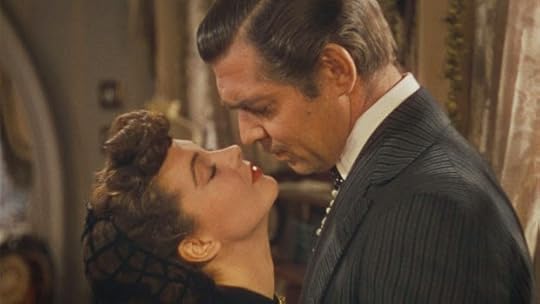 The first episode, which is available right now, focuses on the 1939 classic "Gone With the Wind," which, as we point out, is one of the biggest pop cultural works in modern history. And, what's more, more than 75 years after its release, it doesn't hold up quite like you think it might -- though the specific ways it doesn't hold up are fascinating in their own right.
The first episode, which is available right now, focuses on the 1939 classic "Gone With the Wind," which, as we point out, is one of the biggest pop cultural works in modern history. And, what's more, more than 75 years after its release, it doesn't hold up quite like you think it might -- though the specific ways it doesn't hold up are fascinating in their own right.During the hour-long episode, we talk about "Gone With the Wind," play a little game called wherein we remake the movie along some very specific parameters and, finally play another trivia game to decide what next week's movie is. Give it a listen over at OutofTheaters.com or search for "Out of Theaters" at iTunes. (If it's not there now, it will be soon.) And, if you like what you hear, consider tossing a few coins our way by clicking the "Support the Show" button.
Published on April 26, 2015 15:49
Will Pfeifer's Blog
- Will Pfeifer's profile
- 23 followers
Will Pfeifer isn't a Goodreads Author
(yet),
but they
do have a blog,
so here are some recent posts imported from
their feed.



